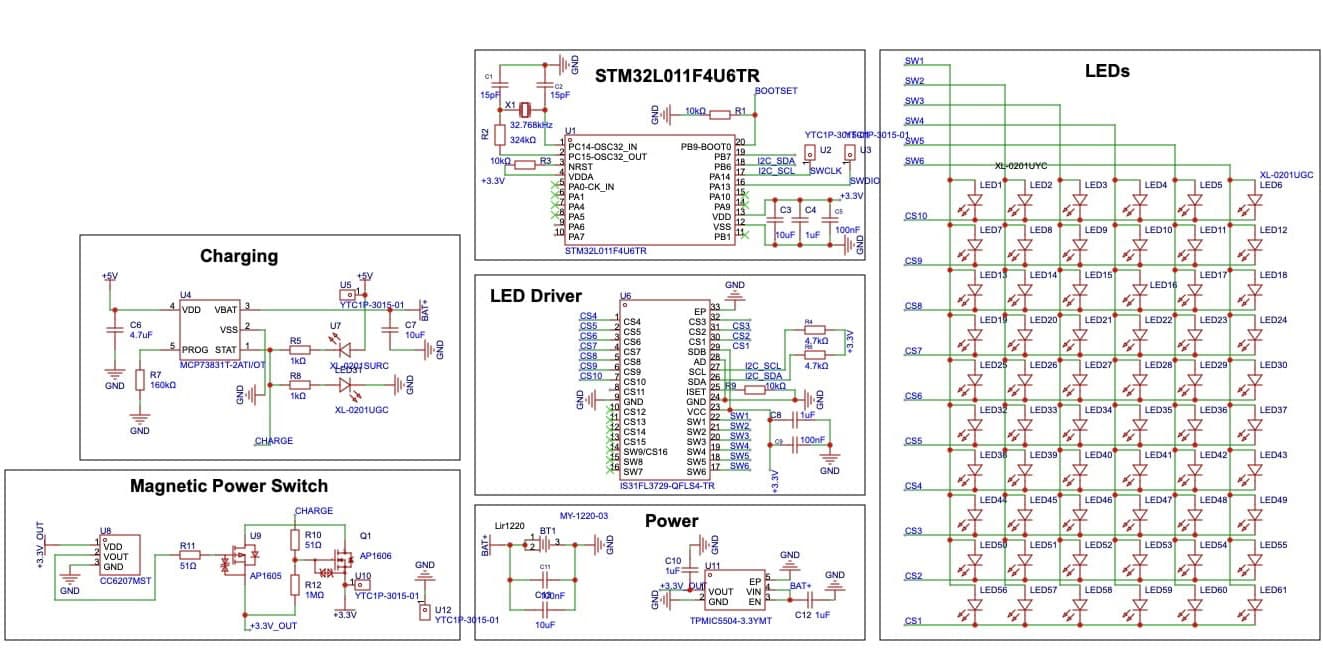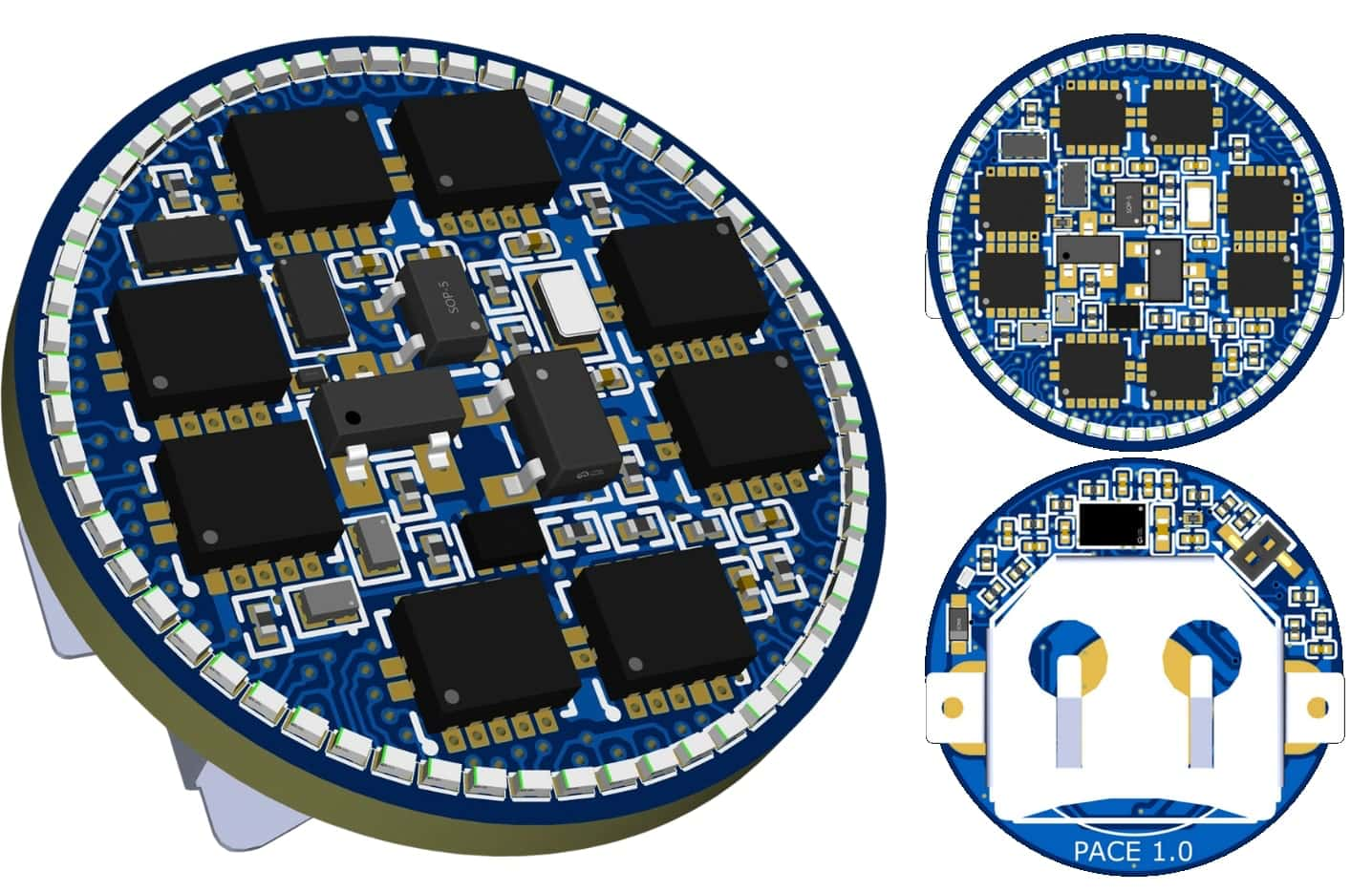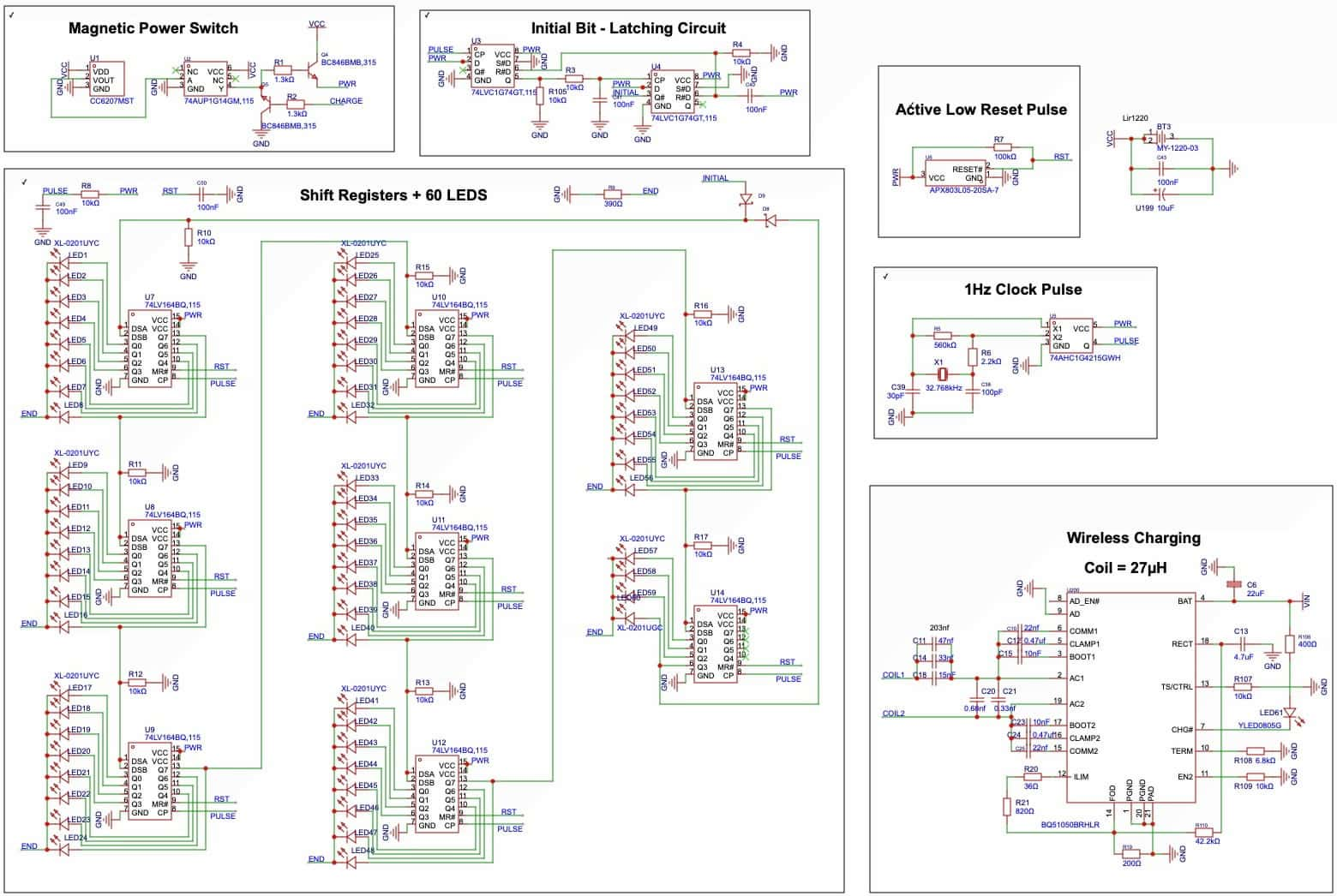Description
I am developing a compact, magnet-attachable timer to assist swimmers with pacing during training and competitions, it's the size of a 1¢ coin (19mm).
Progress
After our pool closed, I started making Pace - a goggle-mounted minute timer, the size of a dime, to help swimmers like me keep pace when training alone.
v1 Discrete components: 8 daisy-chained shifting registers, a 1Hz pulse oscillator, and a delayed latching circuit which provides the first input. My overcomplicated design got a slating review and I despaired at how expensive it would be to make.
v2 Programmable: STM32Lo microcontroller, controlling the LED array with a matrix driver. Due to space constraints, I switched from wireless charging to direct with a storage case. After a full redesign, ready to order, I realised that JLCPCB doesn't support buried vias. These vias alone would cost hundreds of euros. I was crushed.
v3: now consists of two stackable boards, a significantly cheaper, simpler solution. Pace is still a 6 layer PCB, but it will be significantly less dense.
Hopefully this will be the last major iteration of making Pace!



